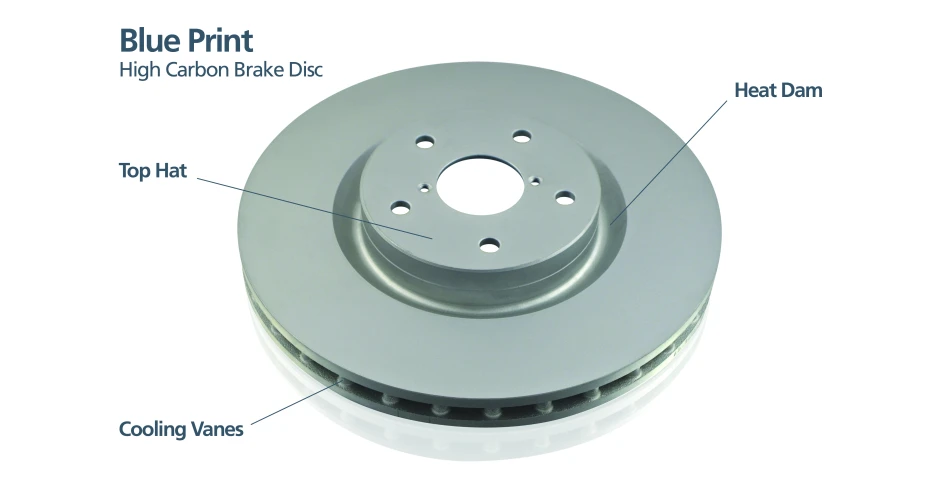Blue Print has warned technicians of the dangers of cheap lightweight brake discs which it says can have a serious impact on the efficiency and safety of a vehicle’s braking system.
The company says that some disc manufacturers have reduced the weight/mass and quality of the material they use in the manufacturing of the disc. They do this by reducing the thickness of the friction plates, thus increasing the air gap, vane size and configuration, heat dam length, and carbon content. This makes the disc cheaper, but also compromises their ability to dissipate heat.
When brakes are applied energy is transferred from the moving disc to the static brake pad in the form of friction, which in turn creates heat. The amount of heat generated depends on the speed and weight of the vehicle, and how hard the brakes are being applied. Under normal operating conditions the temperature of the brakes will be between 150-250 degrees Celsius. However, prolonged or heavy braking applications in quick succession can see the temperature of the brakes exceed 700 degrees.
At very high temperatures brake can become less effective and fade. When this happens, the driver has to press harder on the brake pedal to slow the vehicle down. In extreme cases, there may be a point where the brakes get so hot that they cannot generate enough friction, no matter how hard the brake pedal is pressed. This leads to a downward spiral of braking efficiency with potentially catastrophic results.
Overheated discs suffer with excessive wear, cracking, Disc Thickness Variation (DTV), and potential break-up. DTV is commonly misdiagnosed as ‘warped’ discs, as the frequency of the brake pad moving over the uneven surface is resonated through the hydraulics to the brake pedal and through the steering column to the steering wheel.
For performance and safety the brake disc must have the ability to dissipate heat quickly and effectively in the right areas. Blue Print says in order to do this the disc must be of the right weight/mass/thickness; be of the necessary material/carbon composition; have the specific vane size and configuration, and have the correctly specified heat dam. This prevents heat radiating to the ‘top hat’, which in turn prevents the hub bearings from overheating, in short, they must exactly match the OE specification.
Blue Print points out that all of its brake discs are researched, specified and manufactured to be direct OE replacements and are covered by a ‘3 Year Unlimited Mileage Warranty’ against manufacturing defects.
